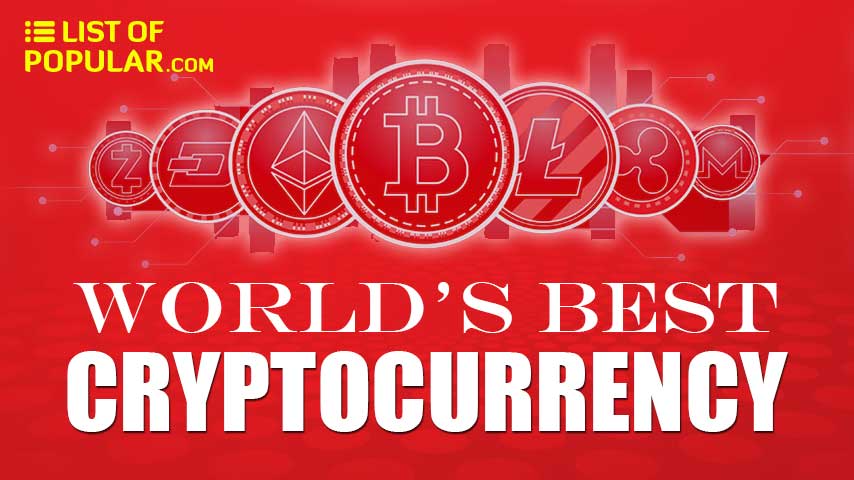1. Bitcoin

Bitcoin (abbreviation BTC) is a crypto currency and a global means of payment (as a system Bitcoin is written with a capital letter, as a currency often with a lowercase letter). It is the first decentralized digital currency since it works without a central bank or central manager. The network is peer-to-peer and the transactions take place between users, without intermediaries. These transactions are verified through network nodes through the use of cryptography and are stored in a public distributed database, known as a blockchain, to which a block is added once every 10 minutes on average. The concept of a blockchain was first described in 1998 by Wei Dai on the cypherpunks mailing list, and implemented in 2009 as open source software under the Bitcoin name by Satoshi Nakamoto (pseudonym of an unknown person or group). Satoshi (abbreviated sat) later became the name of the smallest unit of bitcoin: 1 satoshi = 1/100,000,000 bitcoin (one hundred millionth of one bitcoin) or 0.01 microbitcoin.Bitcoin.org
2. Ethereum
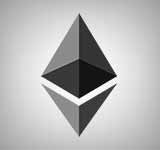
Ethereum is an open source platform and mining network for various crypto currencies including the ether. This decentralized network is based on the blockchain concept. The mining network has been developed to prevent the use of ASICs because minen requires a lot of memory. This was done to centralize the minas counter (so that someone cannot take over the mining network). There is one blockchain in which both the transactions in your own crypto currency ether are recorded, as well as those of hundreds of other crypto currencies and tokens. This blockchain can also track the progress of other data and also contains smart contracts that make a transaction possible, confirm and make it irreversible. A majority of the initial coin offerings (ICOs) use the Ethereum blockchain.Ethereum.org
3. Ripple
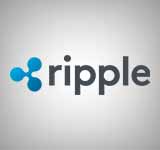
Ripple is a cryptocurrency platform for payment systems, focused on operations with currency exchange without chargebacks, developed by Ripple. A special feature is the consensus registry (ledger). The system was launched in 2012. The protocol supports "tokens" representing fiduciary money, cryptocurrency, exchange commodities, or other objects, such as frequent flyer miles or mobile phone minutes. At its core, Ripple is based on an open partitioned database, uses the reconciliation process, which allows the exchange to be done in a distributed process. The internal cryptocurrency of the Ripple network is referred to as XRP. The network is decentralized and can operate without the participation of Ripple. As of the end of 2017, Ripple is among the top ten cryptocurrencies in terms of market capitalization, along with Bitcoin, Ethereum and others.Ripple.com
4. Bitcoin Cash
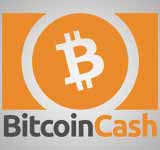
Bitcoin Cash (abbreviation BCH) is a cryptocurrency that was created on August 1, 2017 by a split (hard fork) from the Bitcoin network. By market capitalization, Bitcoin Cash is the fifth largest cryptocurrency. The aim of the spin-off of Bitcoin was to increase the block size limit from 1 MB to 8 MB without adopting the protocol extension SegWit. As a result, Bitcoin Cash allows more transactions per time than in the Bitcoin network. Until the split off (up to block 478558) both blockchains were identical. Each Bitcoin owner received access to the same amount of Bitcoin Cash at the time of the fork, as long as he had access to his private key. The creator and original lead developer of Bitcoin Satoshi Nakamoto built in 2010 a block size limit of 1 MB in the reference implementation. This allowed about seven transactions per second to prevent attacks on the network with too large blocks. He wrote that the limit should be increased later with a minor code change.BitcoinCash.org
5. Cardano

Cardano is a platform project blockchain decentralized, open source functionality and smart contract. It seeks to execute financial applications and provide users with greater flexibility than other blockchain protocols, through a layer architecture. Cardano serves as the basis for Ada cryptocurrency, which in April 2018 was the seventh most powerful cryptocurrency in terms of market capitalization, with USD $ 7,188,617,359. The project was launched in September 2017 by the company Input Output Hong Kong (IOHK).Cardano.org
6. Stellar

Stellar is an open-source value-sharing protocol founded in early 2014 by Jed McCaleb, the creator of eDonkey and Joyce Kim. His board and advisory members include Keith Rabois, Patrick Collison, Matt Mullenweg, Greg Stein, Joi Ito, Sam Altman, Naval Ravikant and others. The Stellar Protocol is supported by a non-profit organization, the Stellar Development Foundation. In October 2017, Stellar and IBM formed a partnership. IBM uses the Stellar network to simplify international payments. Similarly, IBM supports the Stablecoin "Stronghold USD", which is almost 1:1 in relation to the US dollar stands, because for every full coin exactly one dollar is reserved - similar to the cryptocurrency tether.The specially developed cryptocurrency Stellar lumen (XLM) reached a market capitalization of nearly 16 billion US dollars in January 2018 and is currently one of the ten most valuable crypto currencies.Stellar.org
7. Litecoin
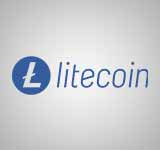
Litecoin is a crypto currency, and also the name of the open source software released under the MIT/X11 license. It is based on the blockchain technology, on which the bitcoin is also built. The creation and transactions of Litecoin are based on an open source protocol and are not regulated by any central authority. Litecoin was created with the intention of improving the bitcoin concept, in which some technical differences play a role. These differences include the algorithmic function (Scrypt versus SHA-256 with bitcoin), a higher maximum number of coins, faster confirmation times and other addresses. Due to the shared source code with bitcoin, the development and continued decentralization of bitcoin is supported by the Litecoin Project.Litecoin.org
8. EOS.IO
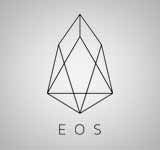
Based on a white paper published in 2017, EOS.IO is currently operated by the private company block.one. The accompanying software was released on June 1, 2017 as Open Source. The goal of the platform is to provide intelligent contracted and distributed enterprise storage solutions that solve the scalability issues of blockchains such as Bitcoin and Ethereum and waive all user fees. EOS.IO achieves this by being both multithreading based and using a delegated proof of stake protocol. The goal is to be the first decentralized system to provide a development environment for distributed applications such as Steemit. The token (EOS) is a utility token that provides both bandwidth and storage on the blockchain in proportion to the total revenue use of 1% of the EOS tokens allows up to 1% of the total available bandwidth to be used.EOS.IO
9. NEO

NEO is a block chain platform and cryptocurrency that the development of digital assets and intelligent contracts so-called "smart Contracts" allows. The project is based in the People's Republic of China and was originally launched in 2014 as AntShares. NEO uses a delegated Byzantine Fault Tolerance (dBFT) consensus mechanism and can handle up to 10,000 transactions per second. NEO tokens can be used to GASTo generate tokens that are used as a platform resource to pay for the calculation or deployment of smart contracts within the NEO network. Da Hongfei developed cryptocurrency is because of these properties and the Ethereum called China.NEO.org
10. Auroracoin

Auroracoin (Avrorakoin) - a cryptocurrency launched in February 2014 as an Icelandic alternative to Bitcoin and the Icelandic krone. Unknown creator or creators use the alias Baldur Friggjar ðinsson (or Odinsson). He, she or they plan to distribute half of all Auroracoin coins to all people who are in the Icelandic national identification numbers, starting from March 25, 2014, giving out 31.8 Auroracoins to one person. Auroracoin was created as an alternative currency to meet the government restrictions on the Icelandic krona introduced in 2008, which seriously limits the movement of currency outside the country. Icelandic foreign currency law also prohibits the exchange of bitcoin foreign currency in the country, according to the Minister of Government.IBF.is
11. Dash

Dash (digital cash, digital money), initially (2014-2015) also known as Xcoin or Darkcoin, is an open source Peer-to-Peer cryptocurrency that similar functionalities as Bitcoin, but also beyond offers. Special attention is paid to privacy. For example, unlike other crypto currencies, transaction information is not public at Dash, as is the case with the PrivateSend system (formerly Darksend). In doing so, transactions are mixed with other people and thus obfuscated. Ten percent of the mining revenue go to the "treasury" to finance development work, community projects and marketing. The proof-of-work algorithm is X11. X11 is a concatenated hashing algorithm and consists of BLAKE, BMW, Grøstl, JH, Keccak, Skein, Luffa, CubeHash, SHAvite, SIMD and Echo. X11 is not resistant to the use of application specific integrated circuits (ASICs) and is suitable for mining with CPUs and GPUs.Dash.org
12. Dogecoin

Dogecoin was released on December 8, 2013. Although originally intended as a parody of Bitcoin and the rapidly growing number of complementary currencies, Dogecoin's exchange rate for US dollars soared in the first two weeks. On Dec. 19, 2013, for $1,050, DOGE received $1, and in terms of market capitalization, Dogecoin was the ninth-largest cryptocurrent, at $8.79 million. The logo of the coin shows a Shiba, on the "Doge" is based. On January 10, 2014, just four weeks after its release, 25% of all dogecoins had been created by mining. On January 19, 2014, the Dogecoin community raised about $30,000 worth of Dogecoins for a possible Olympics win by Jamaica's bobsled team. As a result, the Dogecoin price rose 50% and was the seventh largest cryptocurrency with a market capitalization of $51.54 million. On January 31, 2014, Dogecoin was already the fifth most valuable cryptocurrency with a market capitalization of more than $ 61 million.Dogecoin.com
13. Gridcoin

Gridcoin (symbol: GRC) is a cryptocurrency on an equal footing and, therefore, works as a form of electronic money similar to Bitcoin. It based on a network protocol of open source technology that uses blockchain. Gridcoin seeks to distinguish itself from Bitcoin by adopting "environmentally friendly" approaches to distribute new currencies and secure the network. In particular, Gridcoin implements the new research test scheme (POR), which rewards users with Gridcoin for making useful scientific computations at Berkeley Open Infrastructure for Network Computing (BOINC), a well-known distributed computing platform. The computation in these scientific projects replaces the cryptographic calculations involved in Bitcoin mining. In addition, while Bitcoin protects its network through an energy-intensive work-test scheme, Gridcoin uses a participation test system more efficient in energy consumption.Gridcoin.us
14. MazaCoin

MazaCoin is a crypto currency introduced in 2014, developed by Payu Harris promoted it as a potential future official currency of the Oglala Lakota tribe.Mazacoin.org
15. Monero

Monero (XMR) is a decentralized, blockchain based cryptocurrency. Monero has a stronger focus on privacy and decentralization, and takes a different approach to scalability. The word "monero" is taken from the language Esperanto and means "coin". Monero is based on the CryptoNote protocol, which contrasts with many other cryptocurrencies, such as Litecoin on a bitcoin split off code. In practice, Monero sets itself apart from most other crypto currencies with its strong anonymity, the Proof-of-Work algorithm called CryptoNight (decentralization) optimized for off-the-shelf processors, the continuous adjustment of the mining difficulty and the block size adjustment algorithm (scalability). Moneros Code received recognition from, among others, Wladimir J. van der Laan, the current maintainer of Bitcoin-Core.GetMonero.org
16. NEM

NEM is a Blockchain based cryptocurrency that was launched on March 31, 2015. NEM has the declared goal of a broad distribution model. The NEM blockchain software is used in a commercial blockchain called Mijin, which is being tested by financial institutions and private companies. In January 2018, NEM ranked #8 in the cryptocurrency with a market capitalization of approximately $9 billion. The currency goes back to the movement New Economy Movement (NEM), which aims to create a sustainable, just economic order. The developers come mainly from Japan and the Asian region. NEM was started by a Bitcoin forum user named UtopianFuture, who was inspired by Nxt. The original plan for NEM was to create a fork of NXT, but that was eventually dropped in favor of a completely new codebase.NEM.IO
17. Namecoin

Namecoin is a cryptocurrency and the first copy of the computer program bitcoin in operation. It is based on the same bitcoin code with minor modifications and uses the same SHA-256 distribution algorithm. It is limited to 21 million units and can be divided up to 8 decimals. Unlike Bitcoin, Namecoin can store data within its own chain of blocks. The original proposal for Namecoin called for a decentralized DNS system that used the bitcoin database directly. Anticipating scalability difficulties in this way, it was decided to create a new digital currency separate from the bitcoin completely but in which the bitcoin miners would help their security without having to devote extra resources. The uncensored registration of .bit domains is the main function of Namecoin. This is functionally similar to .com or .net but is totally alternative and independent of ICANN, the body that controls top-level domain names.Namecoin.org
18. Nxt

Nxt is a cryptocurrency introduced in 2013, which is developed by a decentralized community and on the proof-of-Stake (PoS) approach builds. Because Nxt, unlike Bitcoin, is based on a different security concept and programming code, it is also called a second-generation cryptocurrency. In addition to being a payment system, Nxt offers remote marketplace features, a messaging function and a distributed aliasing system (DNS). The Nxt technique can be used for other projects, such as twitter-like social networks based on the Nxt network. In January 2018, NXT ranks 73rd in terms of global market share.NxtPlatform.org
19. Peercoin

Peercoin (code: PPC), also known as PPCoin and Coin Peer-to-Peer is the first cryptocurrency based on a combined proof-of-stake (PoS)/proof-of-work system (PoW) implementation. The monetary symbol is Ᵽ. The acronym is PPC. This system allows the verification of transactions to be simpler than the one that is regularly used, proof-of-work, which is based on complex algorithms that make the computer work harder.Peercoin.net
20. PotCoin

PotCoin is a P2P crypto currency with the aim of becoming the standard form of payment for the legitimate industry. PotCoin is not administrate by any central power and offers a decentralised solution for the transfer of value. PotCoin is an open source software project similar to Litecoin until August 23, 2015, when Potcoin changed to Proof-of-Stake-Velocity (PoSV).PotCoin.com
21. Primecoin

Primecoin (code: XPM) is a cryptographic currency or cryptocurrency, peer-to-peer of open source that uses a work proves that it is also useful for other fields of knowledge, thus taking advantage of computing power to other purposes. It is a reference within the crypto-currencies because it uses a useful labor proof system within its mining scheme, providing a prominent place in other crypto-coins for having a more ecological appeal when harnessing the energy and computational power for an important secondary purpose. Primecoin is an Altcoin because it maintains certain similarities with the Bitcoin, pioneer crypto-daeda to solve the problem of the Byzantine generals, or problem of the distributed consensus, but differs from its predecessor by offering a useful labor proof that, instead of simply computing by values of SHA-256 hash function, allows computational power to search for strings of prime numbers, also called Cunningham strings, and possesses this information to expand knowledge about prime numbers.Primecoin.io
22. Titcoin

Titcoin is derived from the source code of bitcoin key software changes that improve transaction speed and readjustments to network difficulties. Titcoin is exclusively designed and put on the market for the adult entertainment sector, in order to allow those who buy a product or service of this kind to use it without having to keep track of the payment history in their credit card. Titcoin was the first cryptocurrency fully recognized as a legitimate form of currency by a commercial organization in an industrial sector. In January 2014 it received two appointments at the XBIZ Awards 2015 which awards those companies that have played an essential role in the growth and success of adult entertainment.TittieCoin.com
23. BitConnect

24. BitShares

25. Coinye

26. Ethereum Classic

27. Filecoin

28. Libra

Libra (previously known under the name of speculative FacebookCoin) is one of Facebook Inc. planned substitute currency, which should hit the market in 2020. The currency is established for this purpose by a body known as Libra Association operated. By the term deposits, there will be less price volatility and a return is generated. Facebook Inc. is promoting Libra as a solution for people in emerging markets without good access to banking. However, the borrower's Libra deposits require a bank account. Formally, Libra is not a cryptocurrency, as the current definitions of a cryptocurrency are contradicted on some points.Libra.org
29. Petro

30. Tether

31. Verge

32. Vertcoin

33. Zcash


